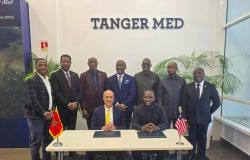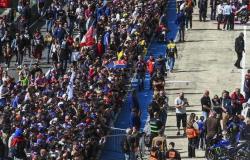An economic challenge to be met, during the launch of phase 2 of the support and enhancement project of entrepreneurial initiatives (Pavia 2), Prime Minister Ousmane Sonko hammered an unavoidable truth: “Our country has no political problem … Our country has no societal problems … Our country has a single problem and a single challenge to take up: this is the economic challenge”. This declaration sums up the urgency of a systemic transformation, aligned with the Senegal 2050 vision, carried by the tandem pr. Bassirou Diomaye Faye and PM. Ousmane Sonko.
With increased funding of 107 billion FCFA, Pavia 2 is positioned as an operational lever of this ambitious vision, aimed at building a sovereign, fair and prosperous Senegal. But what are the optimal strategies to guarantee its success? What challenges persist?
Pavia 2 in the senegal 2050 vision ecosystem: a necessary synergy
The Senegal 2050 vision is based on four strategic pillars:
- Economic competitiveness (33.7% of funding)
- Environmental sustainability (13.4%)
- Human capital and social equity (35.1%)
- African governance and commitment (17.7%).
Pavia 2 is particularly part of competitiveness and human capital axes, targeting three priorities:
- Food sovereignty (agriculture and local transformation)
- Industrial sovereignty (valuation of raw materials)
- Technological sovereignty (innovation and startups).
Key strategy:
Structure value chains to reduce dependence on imports (commercial deficit of 4,000 billion FCFA in 2023).
Strengthen technical support via mentors and territorial incubators (46 covered departments).
The assets of Pavia 2: capitalize on the successes of phase 1
Phase 1 (74.4 billion FCFA) has already demonstrated its impact:
- 24,628 financed projects (66 billion FCFA)
- 93,000 jobs created
- 20,327 beneficiaries trained
- 6,353 formalized companies.
Optimization for Pavia 2:
- Territorial approach: adapt solutions to local specificities (e.g. agriculture in Podor, Tech in Dakar).
- Private sector mobilization: more involvement of banks and investment funds.
- Reinforced mentorship: perpetuate companies beyond initial funding.
The challenges to be overcome: structural brakes and urgent expectations
A. Economic challenges
-- Dependence on raw materials: 64 years after independence, Senegal still exports raw resources (oil, gas, phosphates) without local transformation.
- Youth unemployment: 200,000 annual entrants to the job market, with a poverty rate at 37.5%.
- Limited financing: only 60% of the Pavia 2 budget (107 billion FCFA) is covered by the State and its partners.
B. Operational challenges
- Access to markets: SMEs struggle to integrate formal circuits.
- Corruption: a major brake on the effectiveness of public programs (loss estimated at 1.7% of GDP).
- Immediate expectations: young people want fast results, but the 2050 vision is a long -term project.
Solutions proposed:
- Expand the tax base (revenue optimization).
- Fight against corruption via transparent governance.
- Accelerate administrative reforms to facilitate entrepreneurship.
Perspectives: How to make Pavia 2 an African model?
To succeed, the government must:
- Bet on industrialization (local gas transformation, agriculture 4.0).
- Boost innovation (funds dedicated to technological startups).
- Strengthen partnerships (BAD, AFD, private sector).
- Ensure rigorous monitoring and evaluation to adjust the strategies.
As Ousmane Sonko points out, “Senegal is no longer content to decree its development: it builds it”.
Conclusion: a daring, but achievable bet
The Pavia 2 is not just a economic program: it is a *lever of national sovereignty *, aligned with the *Senegal vision 2050 *. If the challenges are immense (unemployment, economic dependence, corruption), the assets exist: *dynamic youth (75% of the population under 35 years old), natural resources, and political will *.
Success will depend on:
- The effectiveness of the implementation* (territorialization, mentoring).
- The mobilization of private funding.
- The break with past economic models.
As an analyst sums up: “a vision can be ambitious, but what matters is his translation in reality”. Senegal now has the tools to get there.
References:
- Speech by PM Ousmane Sonko (Pavia 2, May 8, 2025).
- Vision Senegal 2050 (BBC Africa, RFI, RTS).
- Economic analyzes (Seneplus, international mail).
Dr. Seydina Oumar Seye







